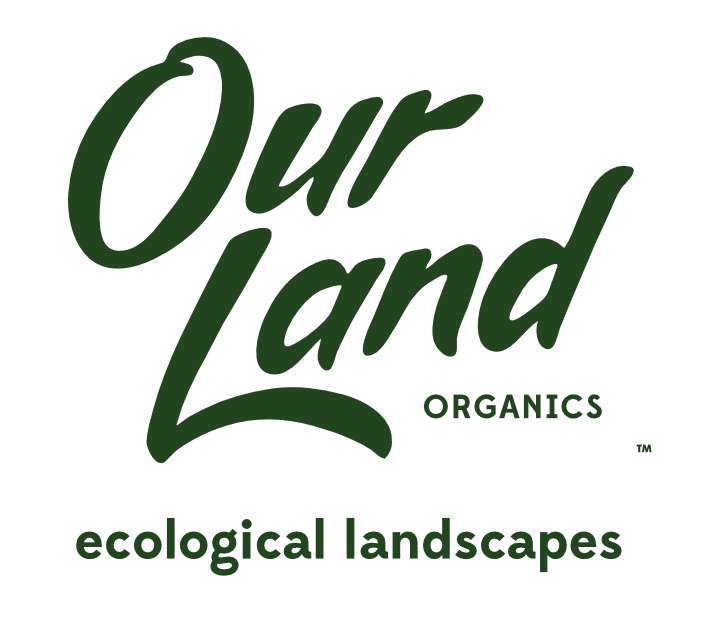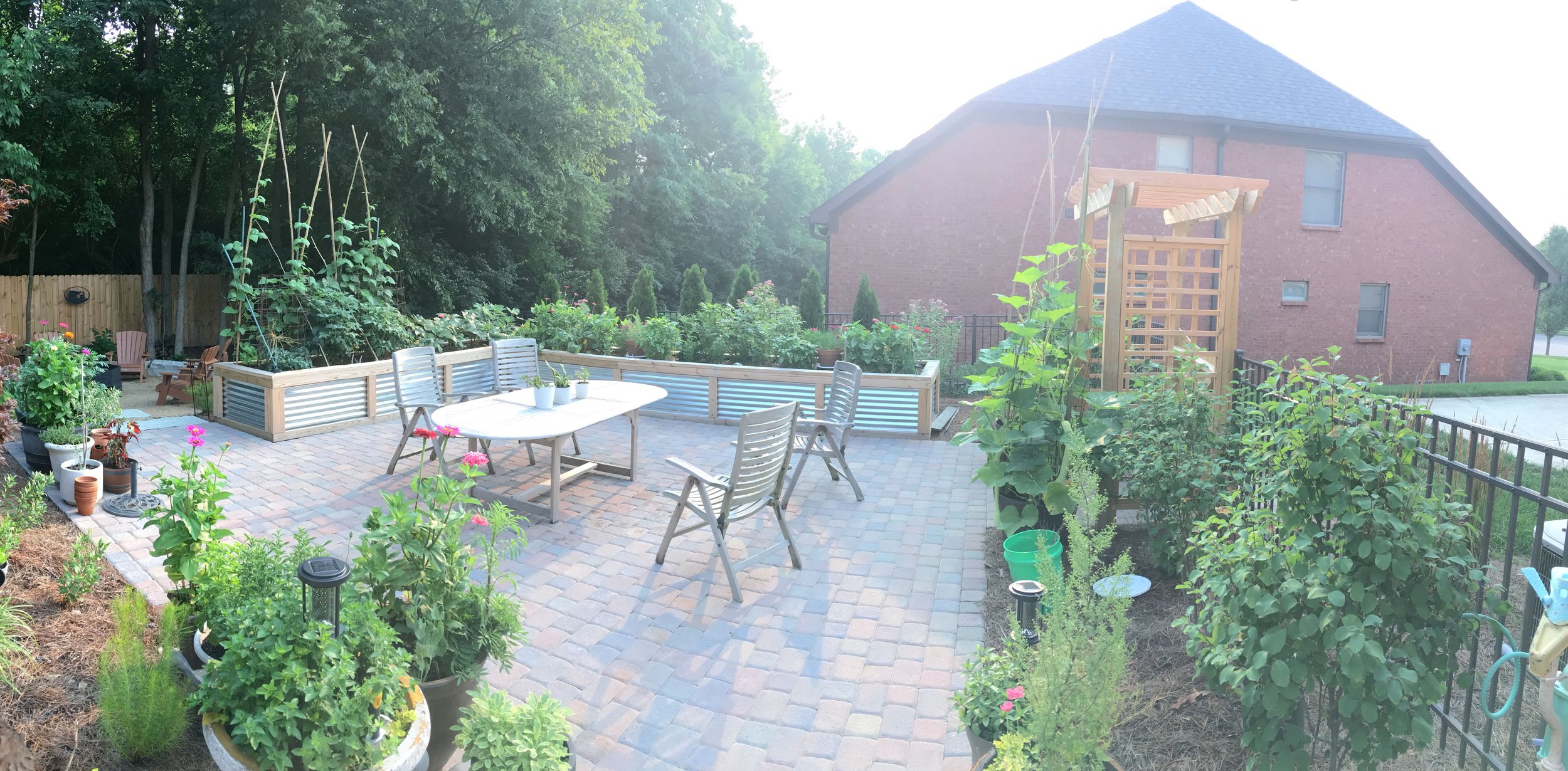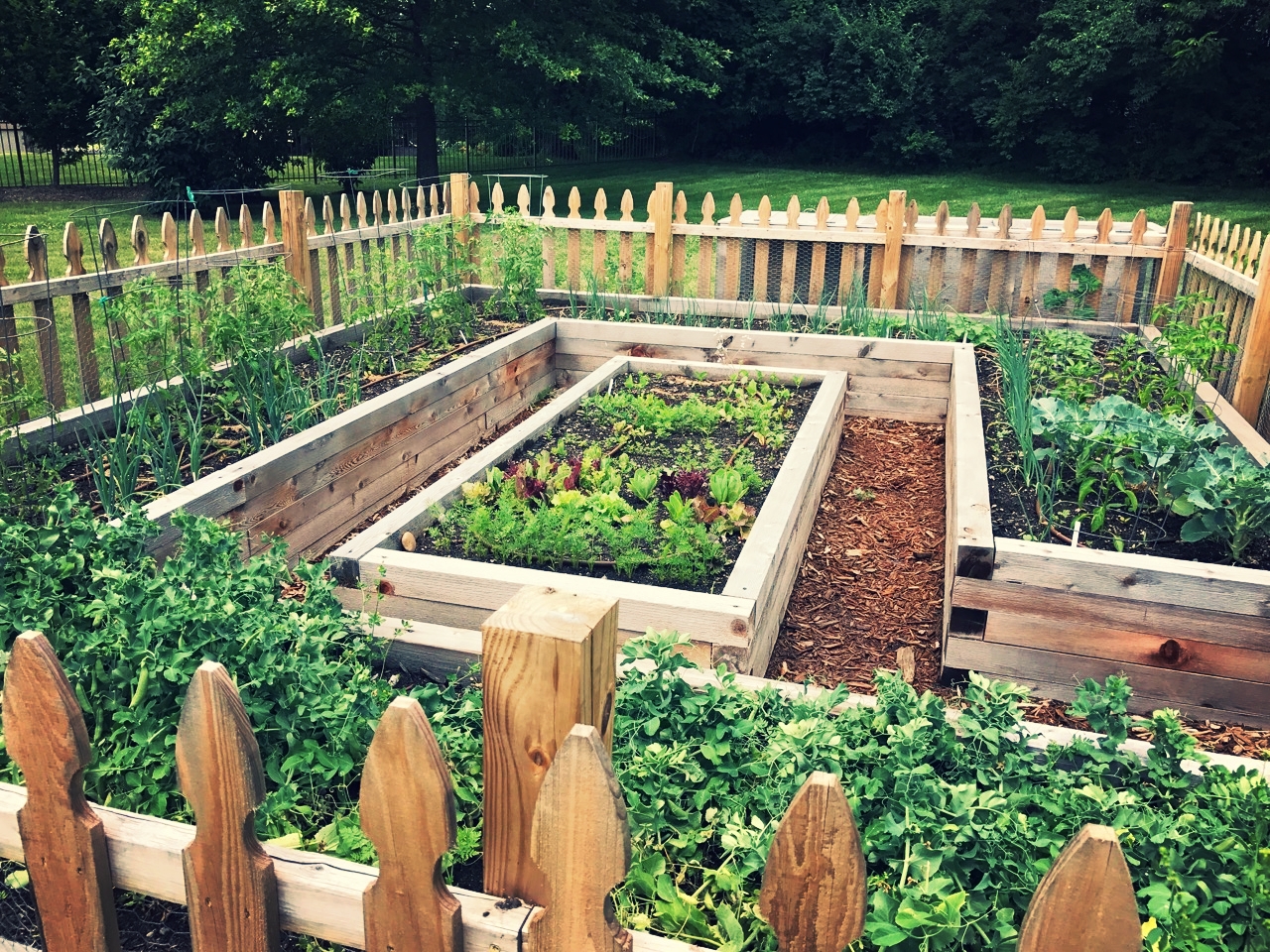Edible landscaping is en vogue—for good reason. This inspired approach to landscape design combines beauty and function by incorporating edible plants into decorative landscapes.
The benefits of edible landscaping are vast. Growing some or all of your own food will get you outside and connecting with nature on a regular basis. It gives you easy access to healthy fruits and vegetables, because you can grow them without pesticides and don’t have to travel to obtain them. Organic growing methods and reduced transportation needs are also good for the environment. Plus, edible plants can add unique beauty to a landscape!
When you combine edible landscaping and native landscaping, you bolster not only your family but also the pollinators, wildlife, and ecosystems on which we all rely. It’s a win-win-win-win.
Edible landscaping, native landscaping, and hardscaping combine to maximize form and function (Our Land Organics design and installation. The carpentry work for this project was created by Lively Homestead Designs)
Tips for Edible Landscape Design
Edible landscaping is both an art and a science. Here are some design guidelines to inspire your efforts.
Follow the age-old landscaping wisdom: Right plant, right place.
Just as ornamental plants have different preferences when it comes to their ideal growing conditions, so do edible ones. Identify the various conditions in your yard (dry versus moist soil, sand versus clay, full sun, part sun, part shade, etc.) and site plants appropriately.
Before planting anything, it’s useful to get a soil test. This will help you identify the right plants for the right place, and it will also indicate the relative health of your soil. Keep edible plants in raised beds if your soil is contaminated with anything that poses a risk to human health.
If your yard is shady, don’t despair! While many annual vegetables require ample sunlight, a variety of edible plants will do just fine in shadier conditions. These include (but are definitely not limited to) arugula, blueberries, broccoli, kale, parsley, sage, and spinach.
A geometric design and carefully curated paths ensure that no vegetable is ever too far out of reach (Our Land Organics design and installation)
Consider access.
The easier it is to access the edible plants in your landscape, the more likely you’ll be to tend to and harvest them. When possible, try to incorporate edibles in the garden beds closest to your house or kitchen—especially those species that require frequent harvesting, such as tomatoes. Plants that take a long time to harvest, such as pumpkins, should do okay farther from the house.
Also think about:
The location of edible plants within each bed. Are they near a path and easy to grab?
Proximity to water sources such as spigots, hoses, etc. Will you be able to water your edible plants with ease?
Embrace perennials.
Many people think of annual fruits and vegetables when they conceptualize edible plants. But there’s a large variety of perennial options that can produce food year after year without needing to be replanted. Once established, perennials are also lower maintenance than annual plants.
Great options include berry bushes such as blueberries, elderberries, blackberries, currants, and raspberries as well as fruit or nut trees such as cherries, plums, pawpaws, oaks, and hickories. Many of these perennial edibles are also native plants.
Incorporate decorative elements and hardscaping.
Your landscape will look more intentional and be more functional if you incorporate elements such as trellises, raised beds or containers, and pathways.
Raised beds are especially useful for anyone with a small space or who struggles to bend down to ground height. Edible vines such as beans, cucumbers, melons, or tomatoes look beautiful climbing up an arbor or trellis.
Vary color, texture, and height.
Just as with non-edible landscaping, it’s important to think about the visual appeal of an edible landscape. Embrace different textures, heights, and colors: the feathery tops of carrots, the striking maroon stalks of rhubarb, bright red or gold tomatoes, the fan-like leaves and colorful stalks of Swiss chard, and so on.
Consider the aesthetic implications of your chosen layout before you put plants in the ground. Think through which plants will grow when to reduce bare spots or overcrowding, and don’t constrain yourself to straight rows farm-style. Edible landscapes can be much more dynamic, and you can intersperse edible and non-edible plants in the same bed.
Fencing helps keep edible plants safe from deer, dogs, and other critters (Our Land Organics design and installation)




